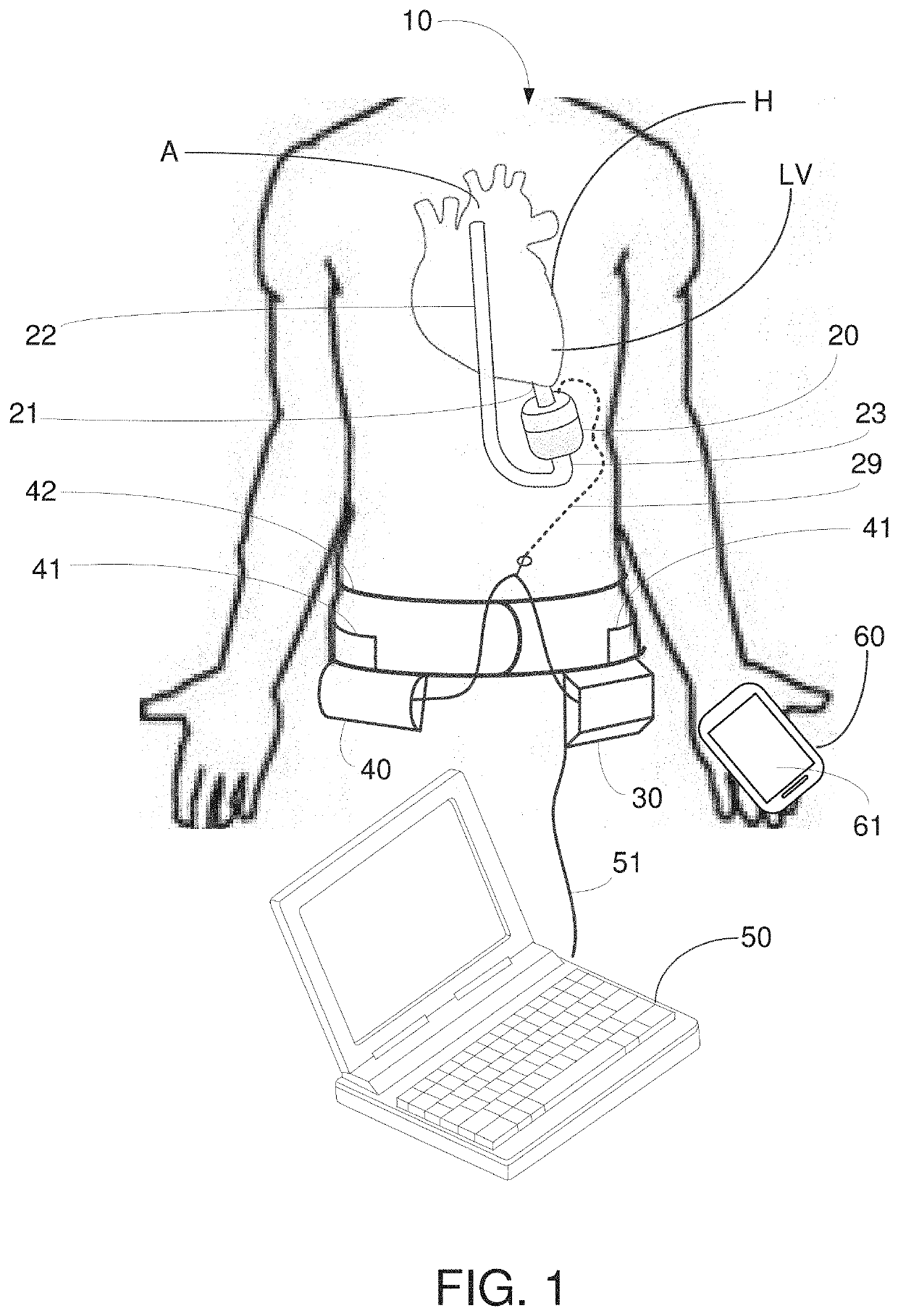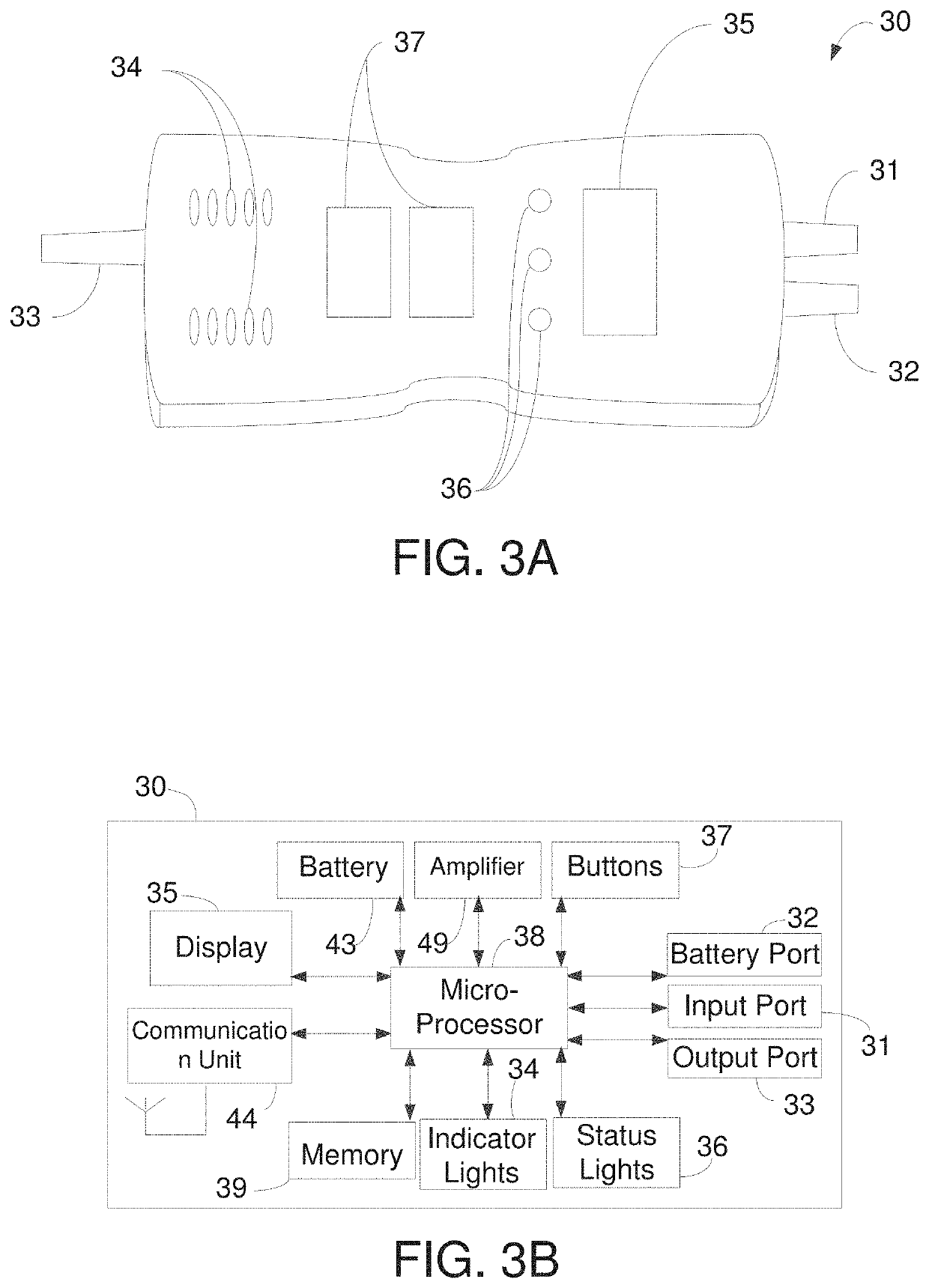Implantable blood pumps comprising a linear bearing
a technology of implantable blood pump and linear bearing, which is applied in the direction of blood pump, circulatory assistance device, other medical devices, etc., can solve the problems of inability to pump oxygenated blood throughout the body, thick walls of the ventricle, and reduced effectiveness of the left ventricle, so as to reduce hemolysis and platelet activation, enhance pump actuation, and reduce shear force
- Summary
- Abstract
- Description
- Claims
- Application Information
AI Technical Summary
Benefits of technology
Problems solved by technology
Method used
Image
Examples
Embodiment Construction
[0083]The pump system of the present invention is particularly well-suited for use as an implantable left ventricular assist device (LVAD), and includes an undulating membrane pump suitable for long-term implantation in a patient having end term heart failure. An implantable pump system constructed in accordance with the principles of the present invention includes an implantable pump and an extracorporeal battery, controller and programmer. The implantable pump includes a housing having an inlet, and outlet, a flexible membrane, and an actuator assembly. When configured as an LVAD, the housing includes an inlet cannula that is inserted into a patient's left ventricle near the apex and an outlet cannula that is surgically placed in fluid communication with the patient's aorta. By activating the actuator assembly within the implantable pump, the membrane is induced to undulate, thereby causing blood to be drawn into the pump through the inlet cannula and expelled through the outlet c...
PUM
 Login to View More
Login to View More Abstract
Description
Claims
Application Information
 Login to View More
Login to View More - R&D
- Intellectual Property
- Life Sciences
- Materials
- Tech Scout
- Unparalleled Data Quality
- Higher Quality Content
- 60% Fewer Hallucinations
Browse by: Latest US Patents, China's latest patents, Technical Efficacy Thesaurus, Application Domain, Technology Topic, Popular Technical Reports.
© 2025 PatSnap. All rights reserved.Legal|Privacy policy|Modern Slavery Act Transparency Statement|Sitemap|About US| Contact US: help@patsnap.com



